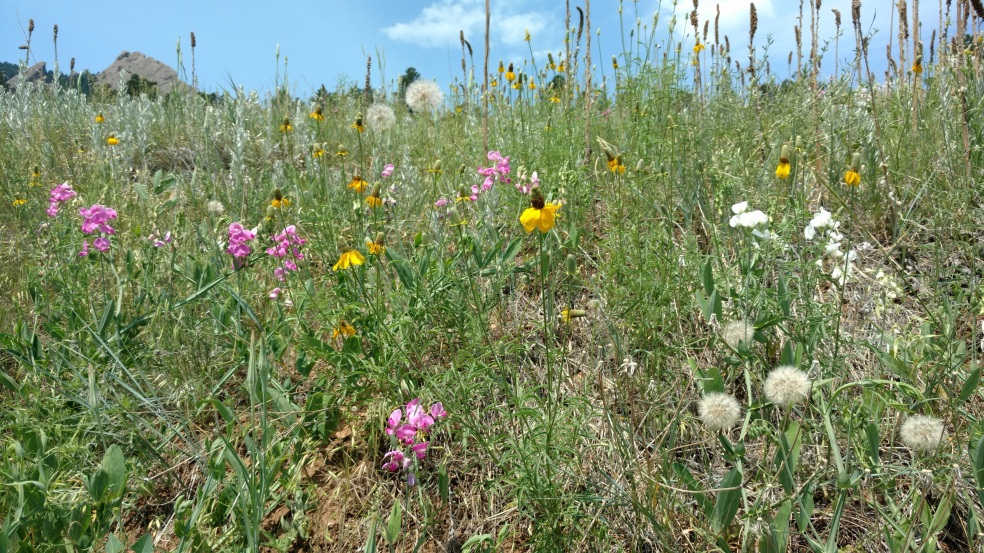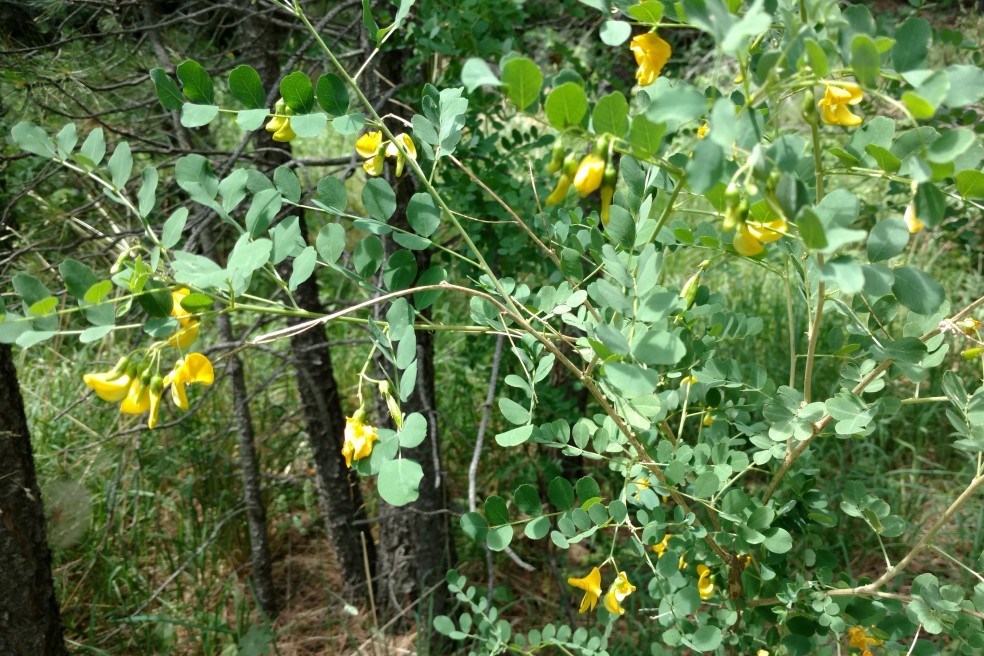Chautauqua meadow is quite colorful along Bluebell road. The picture below show the native Prairie Coneflower, Ratibida columnifera, and Perennial Sweetpea, Lathyrus latifolius, an escapted ornamental. The sweetpea has pink and white varieties.

The most predominant wildflower along Bluebell road seemed to be the Silvery Lupine, Lupinus argenteus.

Under the pine trees on the way up to Royal arch there are several shrubs blooming with white flowers. Waxflower, Jamesia americana, Hydrangeaceae (Hydrangea); Ninebark, Physocarpus sp. probably rocky mountain ninebark, Physocarpus monogynus, Rosaceae (Rose); and Buckbrush, Ceanothus fendleri, Rhamnaceae (Buckthorn).
Some native purple flowers that should be easy to find along the trail right now: Harebell, Campanula rotundifolia, Campanulaceae (Bellflower); Parry Geranium, Geranium caespitosum, Geraniaceae (Geranium); blue mist penstemon, Penstemon virens, Scrophulariaceae (Figwort).
Siberian Peashrub, Caragana arborescens, Fabaceae (Pea), is an introduced species, that stands as tall as a person.

Cow parsnip, Heracleum maximum, near the creek bed. This is a very large plant in the Apiaceae (Parsley) family.
Houndstongue, Cynoglossum officinale, Boraginaceae (Borage), is a noxious weed that can be found in several areas along the trail. Look for the little purple and pink flowers on the same plant.

Northern Bedstraw, Galium septentrionale, and Stickywilly, Galium spurium are both in the Rubiaceae (Madder) family. Look close to see these tiny white flowers. You can see in the photo that the flowers aren’t as wide as a blade of grass.
Royal Arch














